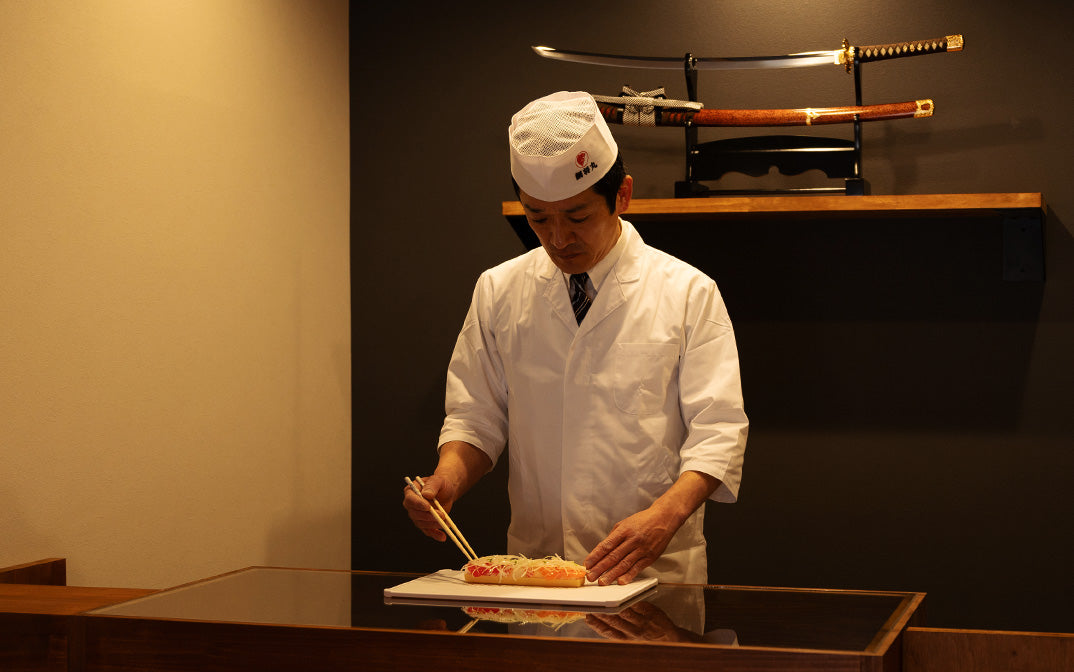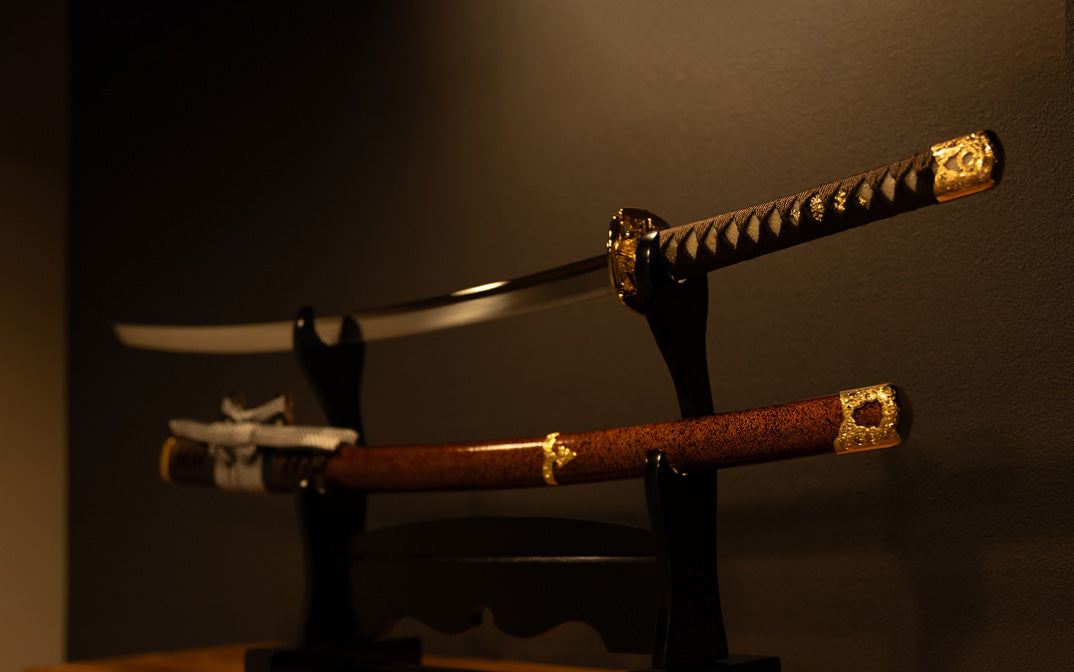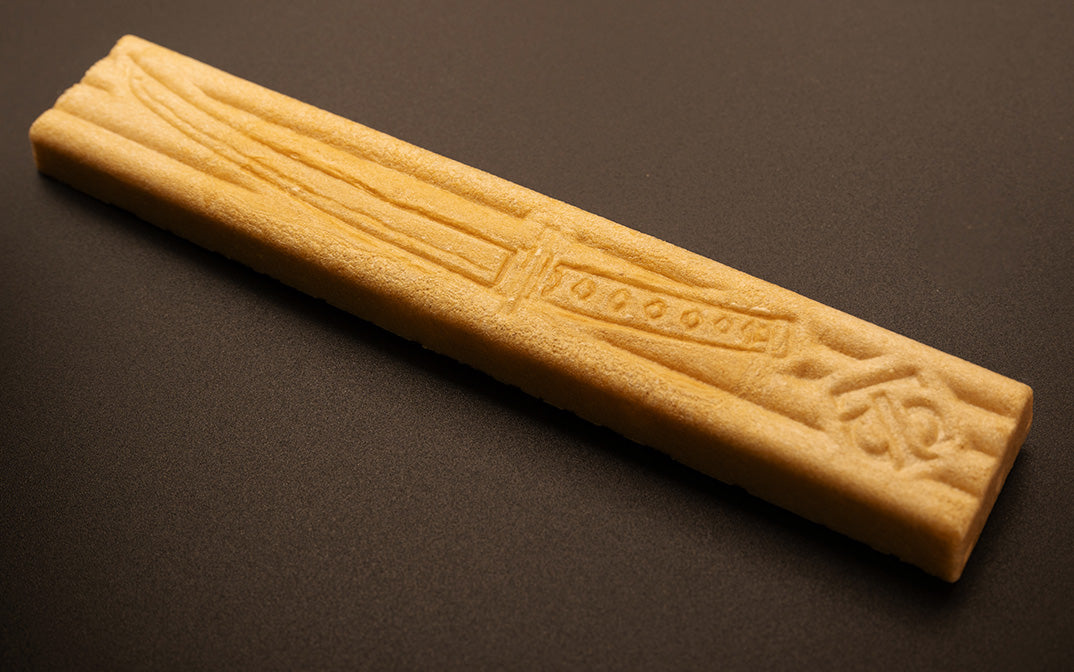PRODUCTS
"Katana Sushi: A Thousand Years of Technique and Taste, a Revolution in One Bite"
Osaka is a city of commerce. We have been delivering fresh fish to this city for 50 years, and now we are starting a new challenge: the birth of "Katana Sushi," a one-of-a-kind gourmet experience that combines Japanese tradition and innovation.
Sushi, swords, and monaka.
These three symbols of Japanese culture each have a history of over 1,000 years and have shaped the soul of Japan.
Our mission is to revive these traditions in modern times and deliver new excitement to foodies around the world.

A Thousand Years of Sushi - The Fusion of the Blessings of the Sea and Human Skill
The origins of sushi date back to the distant Nara period. At the time, a method of preserving fish called "narezushi" was invented, in which fish was salted and layered alternately with fermented rice. Over time, this preserved food gradually changed, and in the Edo period, "nigiri sushi," which is closest to the way we know it today, was born.
The appearance of nigiri sushi revolutionized Japanese food culture. The combination of fresh fish and vinegared rice instantly captured people's hearts, and spread mainly in the city of Edo (now Tokyo). Sushi chefs pursued the perfect balance of flavor, skill in filleting the fish, the strength with which the vinegared rice was pressed, and elevated sushi to the level of art.
In the Meiji period (about 160 years ago), sushi underwent further changes. With the development of refrigeration technology, a wider variety of seafood became available, and the variety of sushi increased dramatically. In addition, with increased exchange with the outside world, sushi became known around the world as a representative Japanese dish.
Today, sushi is loved all over the world as a symbol of Japan's soft power.
However, its essence remains the same as it was 1,000 years ago.
The essence of sushi lies in the once-in-a-lifetime taste created by the combination of fresh ingredients and the skill of a chef.

A Thousand Years of Swords - The Spirit of the Samurai and the Skills of the Craftsman
The Japanese sword is more than just a weapon: it is the embodiment of Japanese aesthetics and spirituality and has been an integral part of Japanese culture for over a millennium.
The origin of the sword dates back to around the 8th century. Straight blades were the norm at first, but from the late Heian period through the Kamakura period, curved blades that would become the prototype of modern Japanese swords appeared. This change in shape was the result of a fusion of Japan's unique fighting style and aesthetic sense.
The sword was the very soul of the samurai. As the saying goes, "The sword is the soul of the samurai," the sword was more than just a weapon. Samurai gave their swords names and treated them with care, as if they were living beings.
Swordsmithing techniques have been refined over time. The technique of repeatedly folding and forging iron creates blades with incredible strength and sharpness. The beautiful hamon that appears on the blade has come to be highly valued as a work of art.
During the Edo period, swords became more decorative, reflecting the more peaceful times.
With the intricate design of the tsuba (guard) and handle decoration, the sword came to be seen not only as a weapon but also as a work of art.
After the Meiji Restoration, the ban on carrying swords put swordsmithing techniques at risk of temporary decline. However, Japanese swords are recognized as cultural assets, and the traditional techniques have been passed down to the present day. Today, Japanese swords continue to fascinate collectors and art lovers around the world as a symbol of traditional Japanese culture.

A Thousand Years of Monaka (Sandwich) - The History and Aesthetics of Japanese Confectionery
Monaka is one of Japan's traditional sweets, and its history dates back to the Heian period. It is said to have originated from the Chinese poem "Munika," but has evolved in a unique way due to Japan's unique culture and aesthetic sense.
During the Heian period, monaka was a high-class confectionery prized among the nobility. It was only after the Kamakura period that the modern-day form of monaka, with bean paste wrapped in a thin, baked rice wrapper, began to be made. During this period, Japanese confectionery culture flourished along with the development of the tea ceremony.
In the Edo period, Monaka became more widely enjoyed as a common confectionery. Monaka with motifs of famous places and seasonal scenery from around the country were made, and they became popular as travel souvenirs. The technology for applying patterns to the Monaka skin also improved, and more beautiful and artistic Monaka began to be produced.
The appeal of Monaka lies in its delicate flavor and beautiful appearance. The harmony between the thin, crispy shell and the smooth bean paste inside seems to represent the four seasons and natural beauty of Japan.
Furthermore, the patterns engraved into the Monaka wrapper represent traditional Japanese motifs and seasonal features, soothing the hearts of those who see them.
After the Meiji period, with the introduction of Western confectionery techniques, Monaka evolved further. New ingredients and techniques were incorporated, and a greater variety of flavors and designs were created. However, its essential charm, delicacy and beauty remain unchanged for a thousand years.
LINE UP
-
Three colors - sea bream
Regular price ¥2,200 JPYRegular priceUnit price per -
Tricolor Crab
Regular price ¥2,200 JPYRegular priceUnit price per -
Three-color shrimp
Regular price ¥2,200 JPYRegular priceUnit price per -
Three-color scallop
Regular price ¥2,200 JPYRegular priceUnit price per -
All Salmon
Regular price ¥2,200 JPYRegular priceUnit price per -
Grilled eel
Regular price ¥2,800 JPYRegular priceUnit price per









